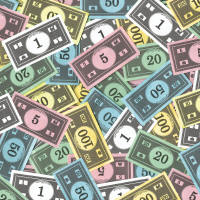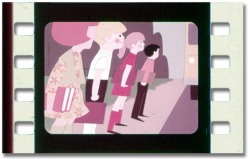Classroom Strategies
This is where you will find some of the strategies that I would like to implement in my future classroom. I have discovered some of these strategies in my previous field experiences and also thought up of some of them on my own. Read on and enjoy! J
Lucky Day

Each day, two students have a “lucky day”. They are paired up usually in alphabetical order by the teacher and each get their turn to have their own day. If you happen to have a class that is odd numbered DO NOT make a group of 3 students. That is because there is always one left out and the students usually feel awkward. Also, if a student happens to be absent on their “lucky day” have them have the next day.
When a student had a “lucky day” it constitutes them opening the doors for the rest of the class, being the messenger of the day, or reading out their journals and passing out things to the rest of the class for the teacher. It makes them feel validated and helps them with responsibility and respect. Each student respects each other’s lucky days and they recognize whose turn it is. It gives them something to look forward to.
When a student had a “lucky day” it constitutes them opening the doors for the rest of the class, being the messenger of the day, or reading out their journals and passing out things to the rest of the class for the teacher. It makes them feel validated and helps them with responsibility and respect. Each student respects each other’s lucky days and they recognize whose turn it is. It gives them something to look forward to.
Schedules

Each student has their own schedule for each month. This is where the students as well as the teachers can keep up with their behaviours and what they have done throughout the month. A “H” indicates that the student didn’t do their homework; an “S” indicates that they didn’t have something signed; an “X” indicates bad behaviour, and a “*” indicates that the student behaved well and did their homework etc. If the student has more than one “X”, a “H”, or an “S” they lose their star completely.
The Point System

Group Points: There are two different point systems in this class. The first one is where the students are either divided in their seating groups or into boys and girls and they have to compete against each other to gain a point. This helps them to work as a team. Usually they compete to be better behaved and faster that the other group. For example, at the end of the day they have to organize their homework and things to get ready to leave and the first group ready and better behaved gets a point. Once they get to 10 points, they get a reward.
Individual Points:The next point system constitutes giving out pieces of paper with a certain number of points on it depending on the grade level and the students accumulates this. They can get these points when they have a good mark, good behaviour, and they have done all of their homework. Basically, it can be given whenever the teacher decides.
End of the Week Draw

On Fridays, the teacher asks the students to count out their total amount of points. If they have 20 points they give these points to the teacher and they get to be entered into the draw. They also get a different coloured star on their schedule at the end of the week. Every student in the draw gets a candy but the ones that are picked get a bigger prize. This gets them motivated to do their work and behave in class since they know that they get a chance to be rewarded in the end.
Line-up

Students need to line up to basically go everywhere around the school. They need to line up when they are outside and have to go back in, they have to line up to go to the bathroom, to go drink , to go lunch, and to go to other classrooms. They also have an order to the way they are lined up. The order is set in the beginning of the school year and stays the same throughout. The order is determined based on their height and there is one line for girls and one line for boys. The only thing that ever changes is when the students have a “lucky day”. When it is their “lucky day”, they get to stand in front of the line so that they can open the doors for the other students. This whole system is in place to avoid the students bickering and fighting over which person got in line first. Instead, they all get in line where they are supposed to and there is no bickering.
Floor Seating

When the teacher actually teaches a lesson, she has her students sit on the floor in the back of the classroom instead of having them stay at their desks. This is because she wants them differentiating between working at their desks and actually learning and being completely attentive. I also think that the fact that they get to sit on the floor altogether makes the learning process more friendly and less formal. Just as when they line up, they also each have a place assigned to them. The shorter and smaller students sit in the front and the taller students in the back so that they won’t block the vision of the smaller students. Since the floor is made out of tiles, each student is assigned a tile and they also have a tile separating them from the other students surrounding them. This is to avoid them touching and complaining that another student is coming within their tile space. The system also eliminates the chance of them fighting as to where each student gets to sit.
Calendar

This is where one of the “lucky day” students places the chart with the right date, day of the week, and weather. The student then reads out the information for the rest of the class. For example, “Today is Tuesday, April 28th, 2009; the weather is rainy and cloudy.” The class then repeats this after the student. Afterwards, the student then picks out 4 individual students to read it in front of the class. This gives them the confidence to speak in front of their classmates while at the same time haves them learning the calendar, days of the week, dates and the weather.
The Activity Wheel

The students are paired up with a partner with someone from their grade level and their names are placed in a wheel. Two-three times a week, the teacher spins the wheel and the students are randomly assigned to different stations. Examples of stations are, “reading to another class, teacher, janitor, principal, or secretary”, “computers”, “listening center” “Math center”, “reading center”, “games”, and “clean-up crew”. It enables them to have variety and have the opportunity to do different things.
